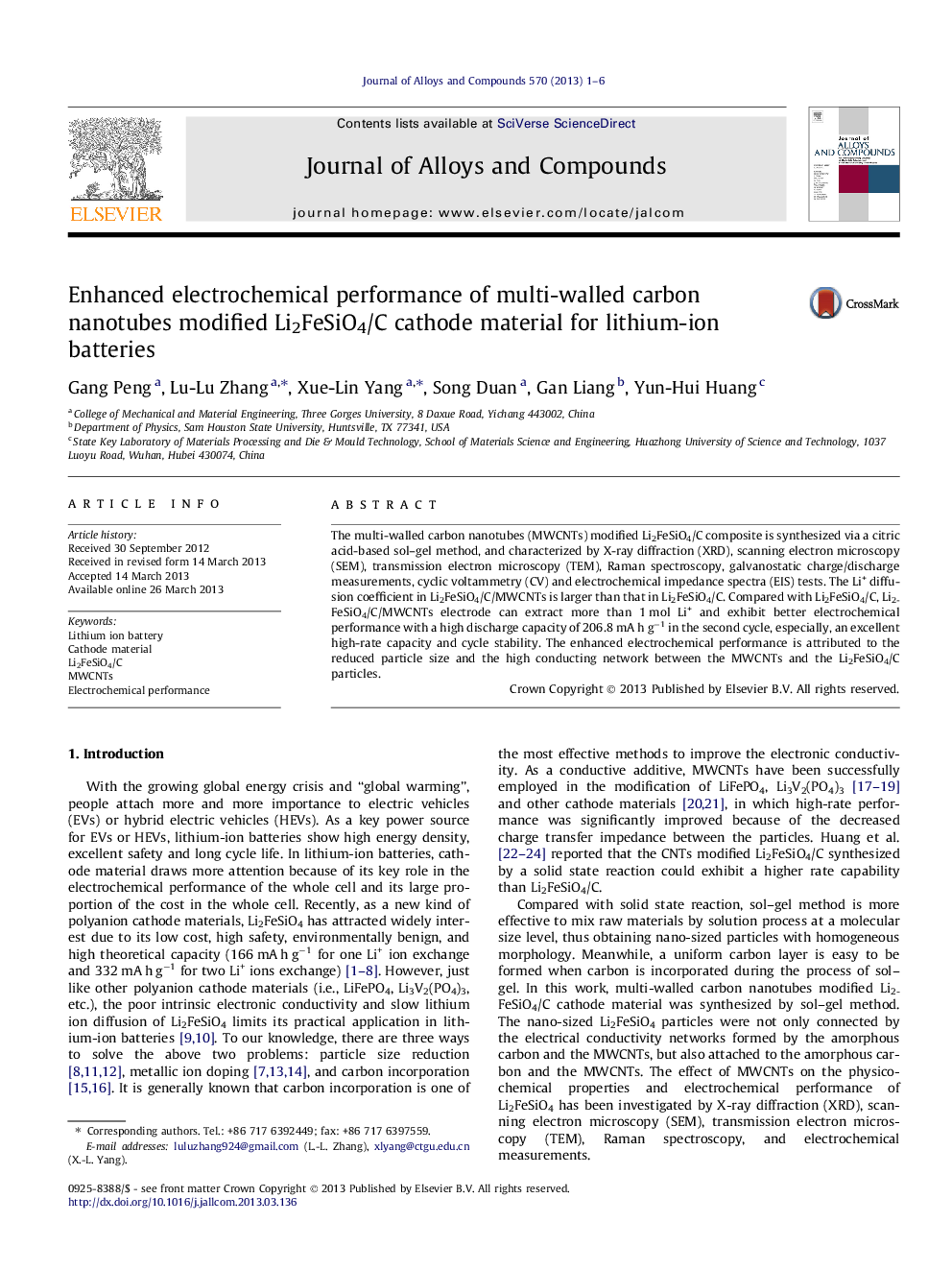| Article ID | Journal | Published Year | Pages | File Type |
|---|---|---|---|---|
| 1613983 | Journal of Alloys and Compounds | 2013 | 6 Pages |
•Nano-Li2FeSiO4/C/MWCNTs composite was successfully synthesized via a citric acid-based sol–gel method.•High conducting network were attained for Li2FeSiO4/C/MWCNTs.•The Li2FeSiO4/C/MWCNTs electrode can extract more than 1 mol Li+ at 0.1 C.•The as-prepared Li2FeSiO4/C/MWCNTs electrode displays a remarkably enhanced high-rate performance and cycling stability.
The multi-walled carbon nanotubes (MWCNTs) modified Li2FeSiO4/C composite is synthesized via a citric acid-based sol–gel method, and characterized by X-ray diffraction (XRD), scanning electron microscopy (SEM), transmission electron microscopy (TEM), Raman spectroscopy, galvanostatic charge/discharge measurements, cyclic voltammetry (CV) and electrochemical impedance spectra (EIS) tests. The Li+ diffusion coefficient in Li2FeSiO4/C/MWCNTs is larger than that in Li2FeSiO4/C. Compared with Li2FeSiO4/C, Li2FeSiO4/C/MWCNTs electrode can extract more than 1 mol Li+ and exhibit better electrochemical performance with a high discharge capacity of 206.8 mA h g−1 in the second cycle, especially, an excellent high-rate capacity and cycle stability. The enhanced electrochemical performance is attributed to the reduced particle size and the high conducting network between the MWCNTs and the Li2FeSiO4/C particles.
Graphical abstractThe multi-walled carbon nanotubes (MWCNTs) modified Li2FeSiO4/C composite is synthesized via a citric acid-based sol–gel method. The as-prepared Li2FeSiO4/C/MWCNTs electrode displays a remarkably enhanced high-rate performance and cycling stability because of the effective conducting network between the MWCNTs and the Li2FeSiO4/C particles.Figure optionsDownload full-size imageDownload as PowerPoint slide
